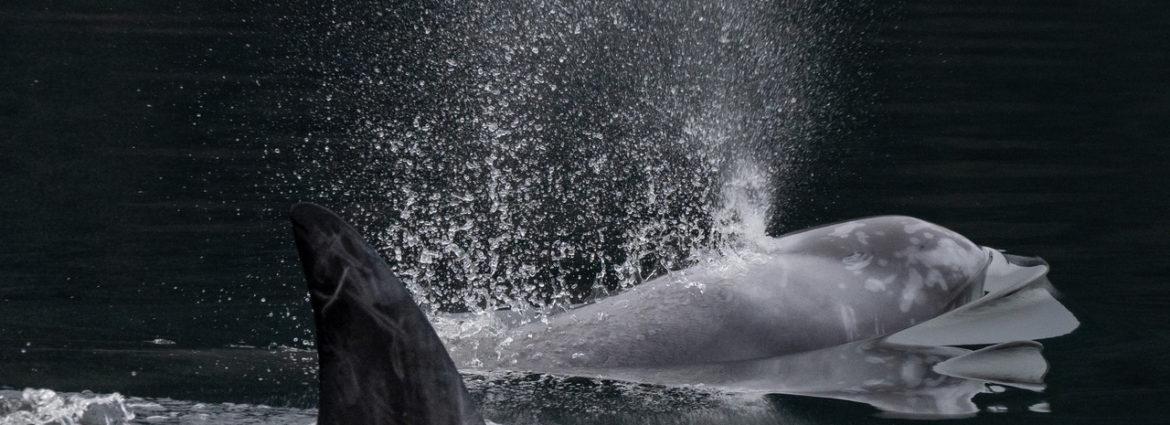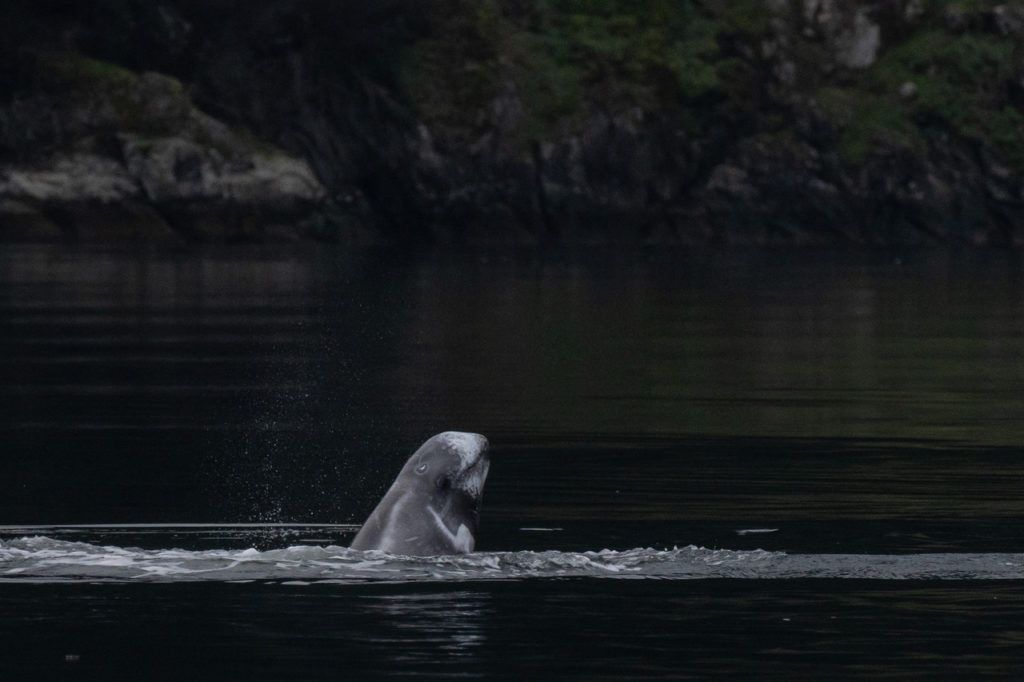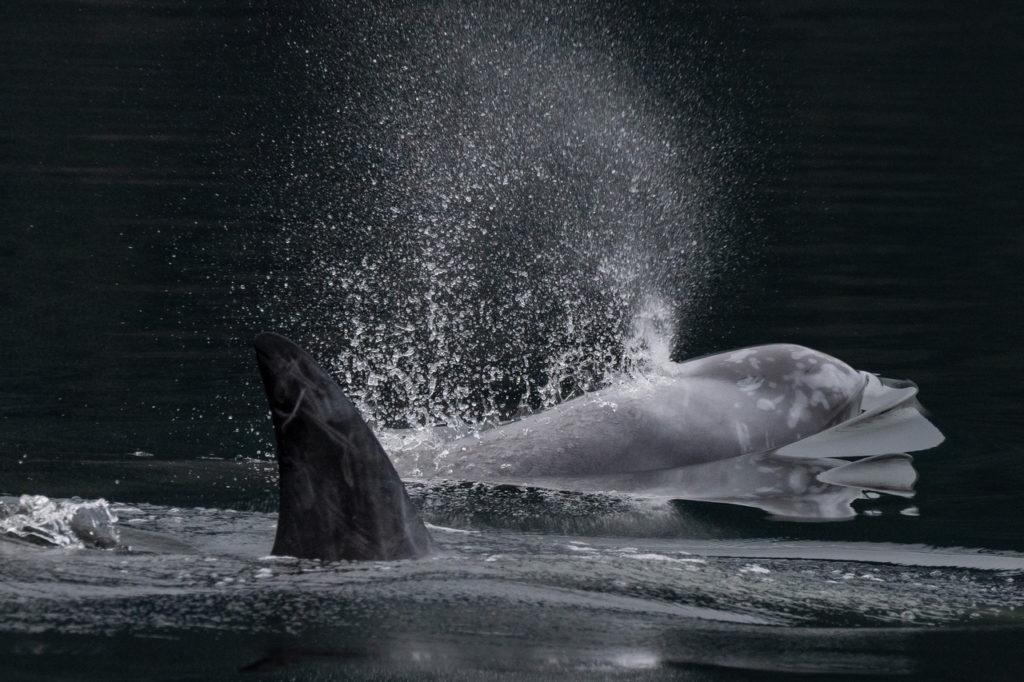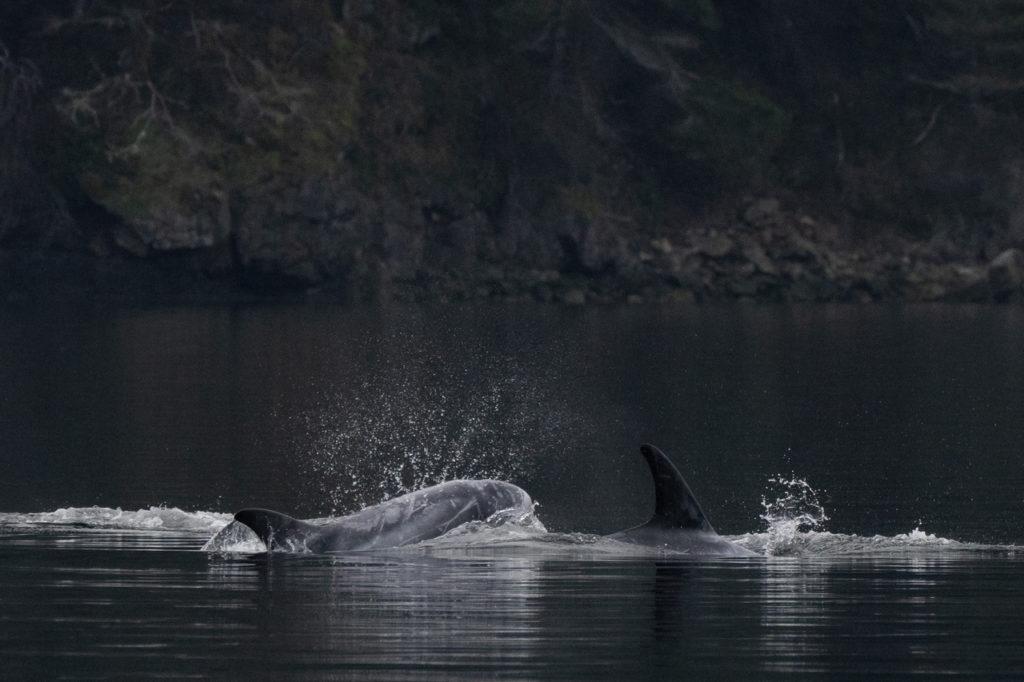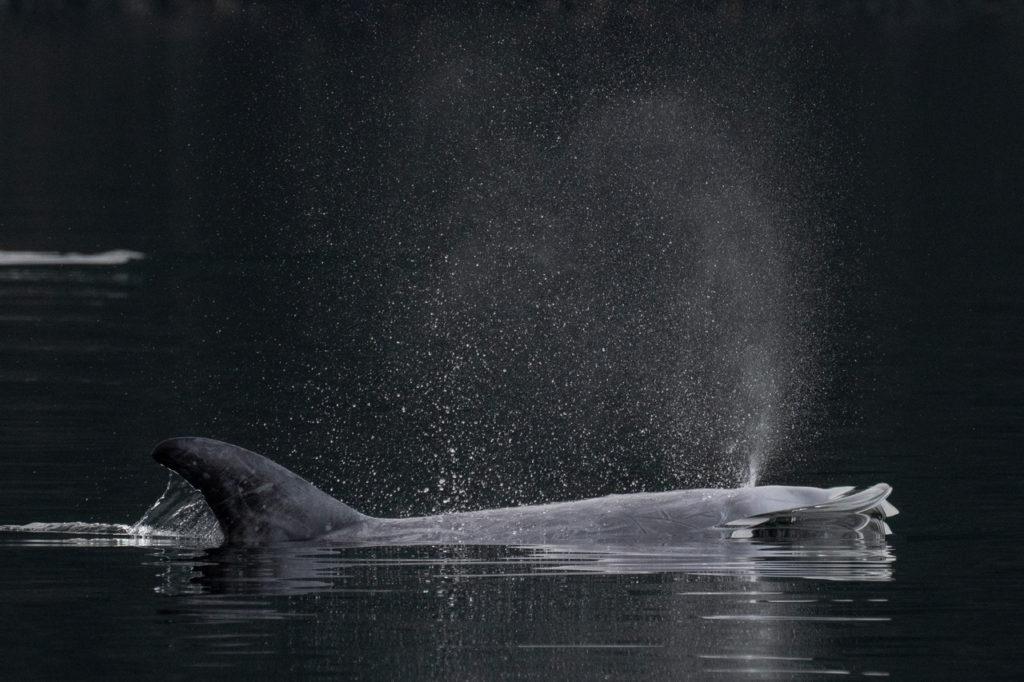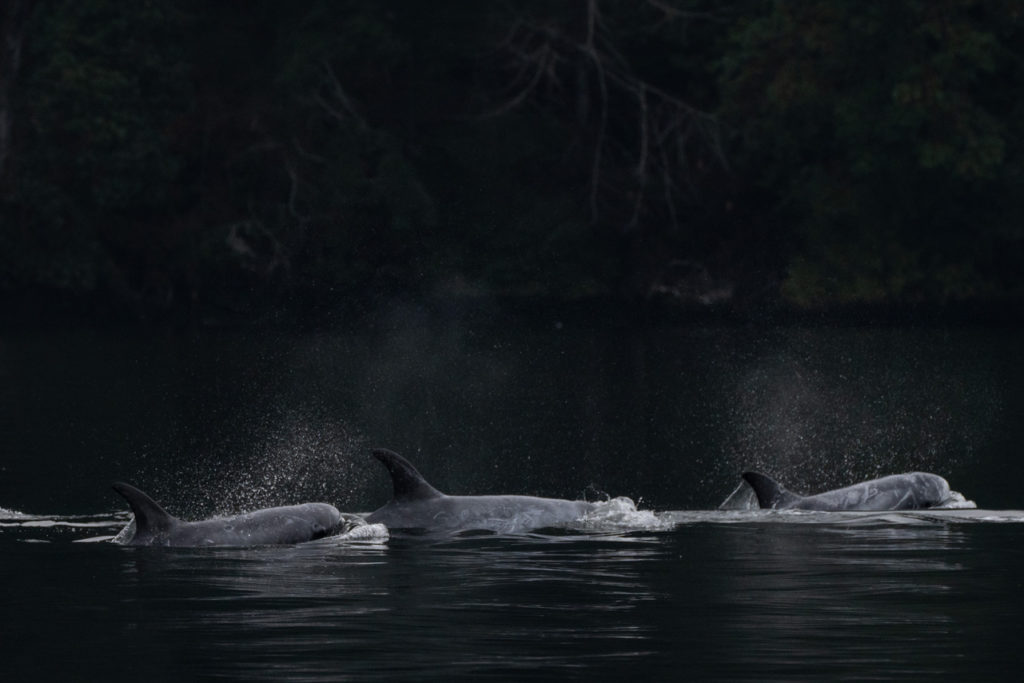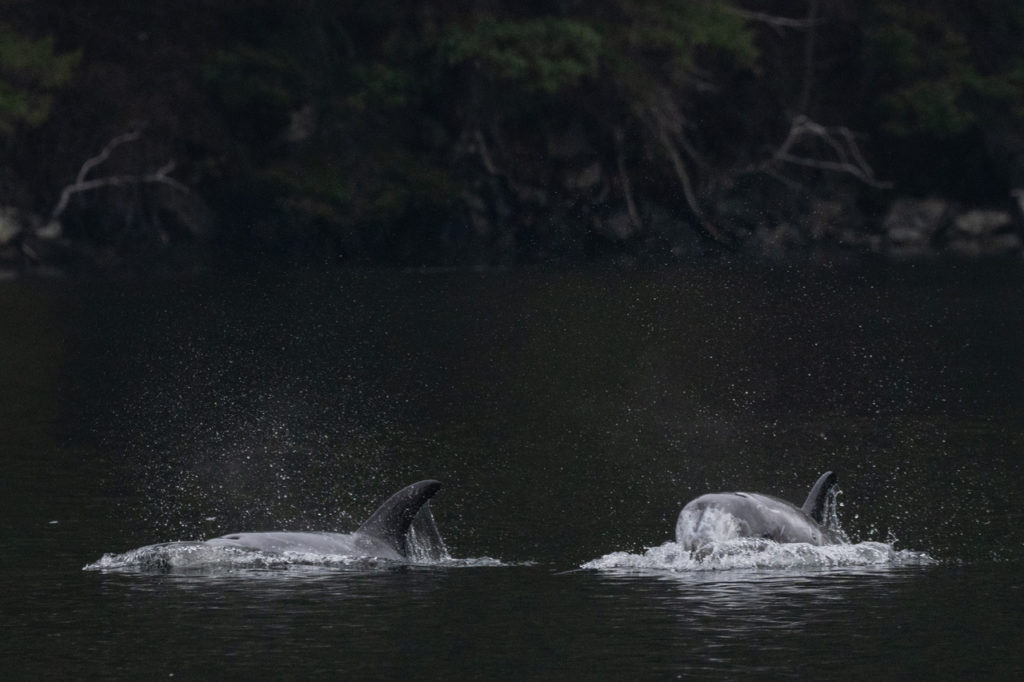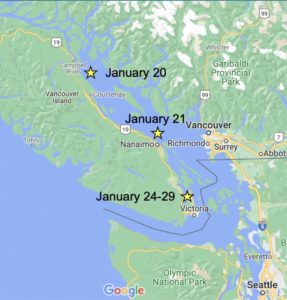
We were playing a hunch.
Over the past week we had seen the reports from further north of a rare-to-the-area species of dolphin and had waited, and hoped, that they would come our way. Reports trickled in. First seen in Campbell River. Then Nanaimo. Finally, Saanich Inlet -- it wasn’t close but it was somewhere within reach. We waited as windy weather blew through. A week passed and somehow there were still reports of them. When something as rare as this happens, sometimes you just have to take a chance.
With a boat full of intrepid, hopeful whale lovers we departed with no recent word of them. We hadn’t had a confirmed report for over 24 hours but we were willing to give it a shot despite the distance. It’s a bit of a journey from our home port of Friday Harbor on San Juan Island, but we bundled up, braved the cold, and pointed the boat in that direction. As we got in the area where they had been seen a friend called us on the radio. “We’ve found them. They’re just up ahead.”
Risso’s dolphins!
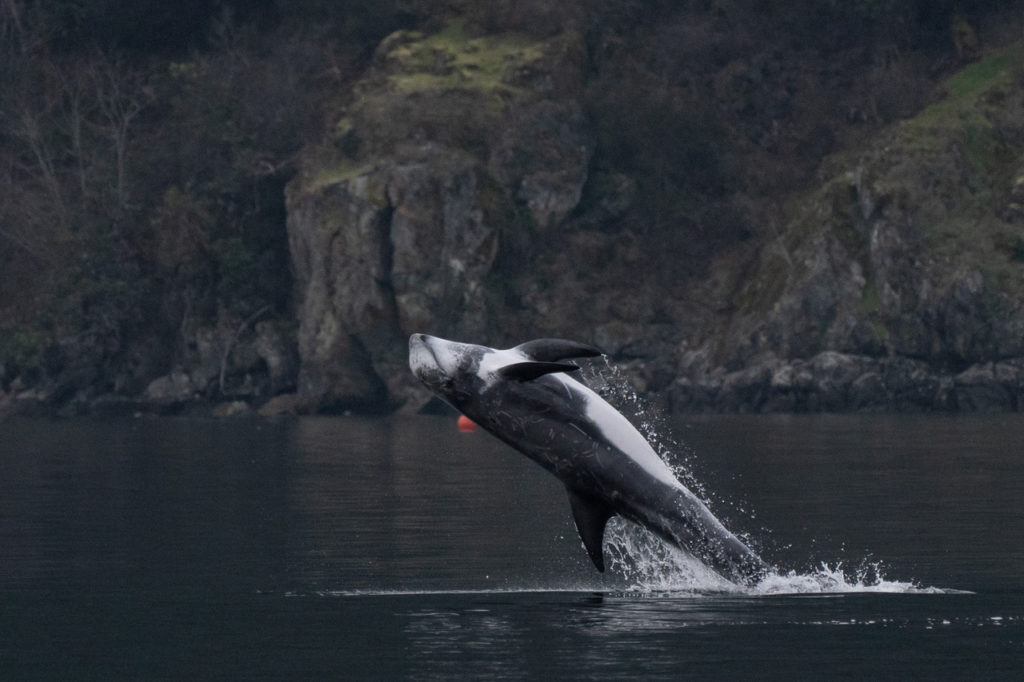 The group of approximately 18 Risso’s dolphins had found their way into Saanich Inlet and were, presumably, finding their preferred prey in the deep waters of Finlayson Arm. Most of the folks on board had never seen Risso’s dolphins before. The few of us that had seen them before had never seen them before in the Salish Sea, but elsewhere in places like Monterey Bay, California. This species has a preference for the open ocean, over the continental shelf and slope. Though they have been seen as far north as the Gulf of Alaska and Kamchatka Peninsula* they seem to prefer waters warmer than 59 degrees Fahrenheit.
The group of approximately 18 Risso’s dolphins had found their way into Saanich Inlet and were, presumably, finding their preferred prey in the deep waters of Finlayson Arm. Most of the folks on board had never seen Risso’s dolphins before. The few of us that had seen them before had never seen them before in the Salish Sea, but elsewhere in places like Monterey Bay, California. This species has a preference for the open ocean, over the continental shelf and slope. Though they have been seen as far north as the Gulf of Alaska and Kamchatka Peninsula* they seem to prefer waters warmer than 59 degrees Fahrenheit.
That made their appearance here unusual to say the least. While a few had been seen in Puget Sound in 2011, prior to that a group of them hadn’t been seen on the east side of Vancouver Island since ten of them were seen briefly between late August and early September 1978.
While there is a lot of area to cover in the inland waters of British Columbia and Washington state, if they were here more frequently, we would likely hear about it. Risso’s dolphins (Grampus griseus) are unique in appearance and they stand out in more ways than one. They lack the extended rostrum that some might think of when they hear the word ‘dolphin’. There’s no bottlenose here! Instead, their blunt faces are almost reminiscent of pilot whales. The other distinguishing feature that is quickly noticed are the scars! These cetaceans are covered in them. Born grey to dark brown they lighten in color as they age and acquire their trademark scarring, which is believed to be caused by other Risso’s dolphins and the beaks and suckers of their preferred prey—squid. Some older individuals can be almost completely white.
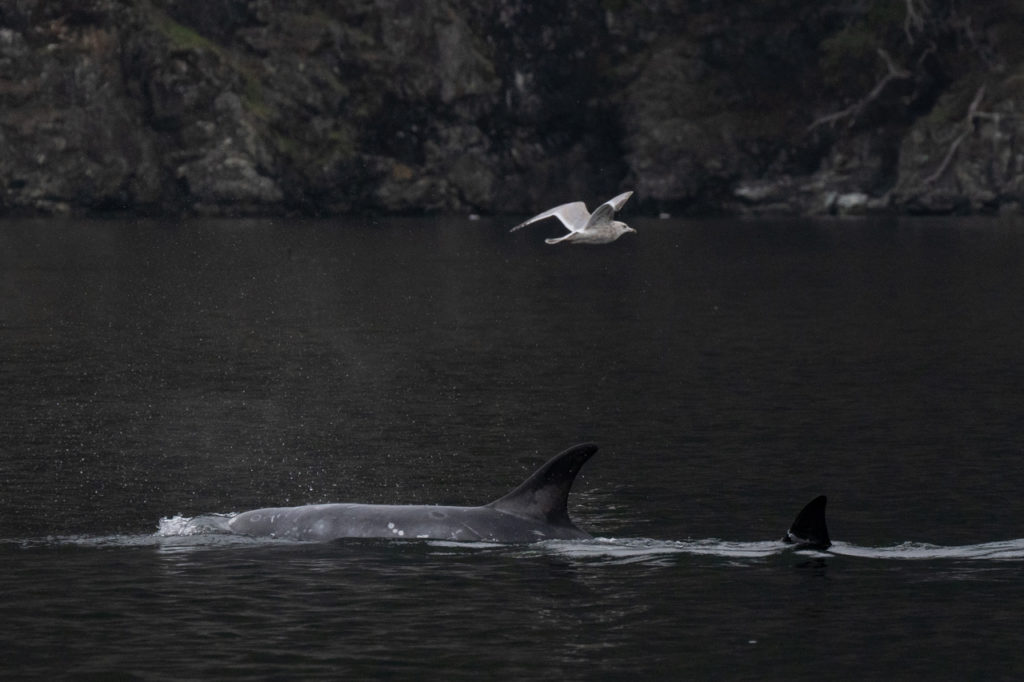
While little is known about the social structure of these dolphins there is some evidence from long-term photo identification studies that they form stable groups of around a dozen animals or fewer. It has also been noted that males may form their own groups instead of mixing with females and calves.
Though Risso’s dolphins are protected here in the United States by the Marine Mammal Protection Act (MMPA), they are hunted in other places around the globe. Japan takes them by the hundreds during their annual drive hunt in Taiji, killing many and capturing younger animals for aquaria. They are also hunted in Sri Lanka. Because of their preference of the waters on or near the continental shelf, they come into conflict with fisheries and are killed incidentally as by-catch. Despite those taken intentionally by hunters or accidentally by fisheries this species is thought to be relatively abundant and widespread.
Despite this being the first time we’ve ever seen Risso’s dolphins on one of our tours we hope to see them again. Even though they’re believed to be part of an abundant population we will work hard to preserve and restore the ecosystem here in hopes that they will be able to find abundant prey should they visit again in the future.
*Ford, John K.B. Marine Mammals of British Columbia. Victoria, BC. Royal BC Museum, 2014.


